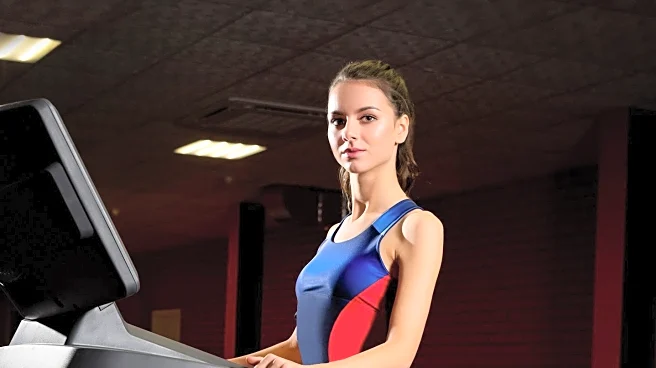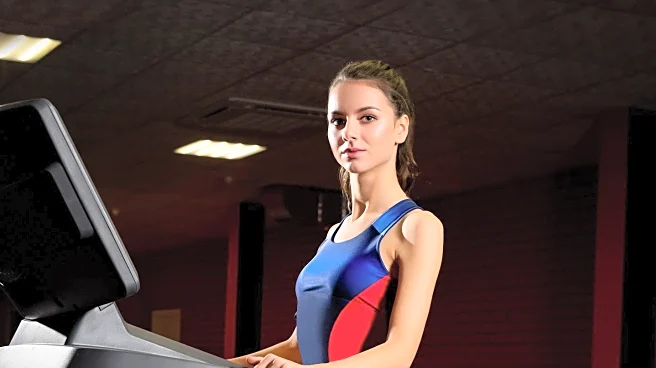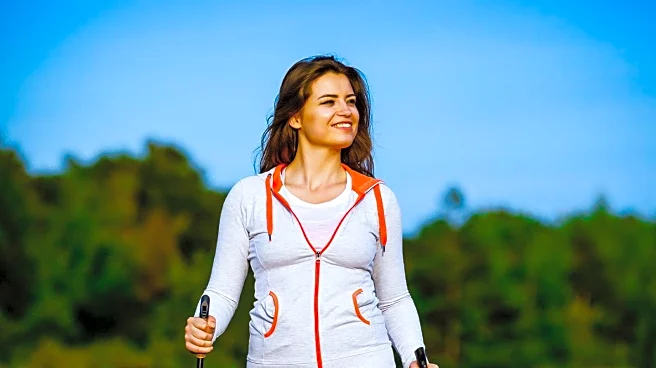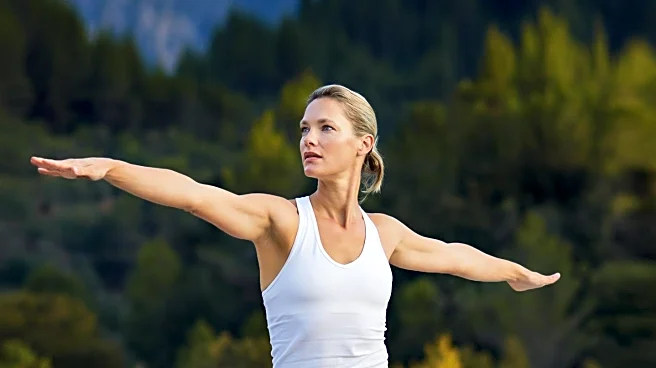What's Happening?
A recent study published in the International Journal of Exercise Science has examined the viral '12-3-30' treadmill workout, popularized by influencer Lauren Giraldo on TikTok. The workout involves walking at a 12% incline at a pace of three miles per hour for 30 minutes. Researchers compared this method to self-paced treadmill running to assess calorie burn and the type of fuel used by the body. The study involved 16 healthy young adults who participated in both workouts, adjusted to burn the same number of calories. Findings revealed that while running burns calories faster, the '12-3-30' workout uses a higher percentage of fat as fuel compared to running, which relies more on carbohydrates.
Why It's Important?
The study's findings are significant for individuals seeking efficient fat-burning workouts. While running is more effective for quick calorie burn, the '12-3-30' method offers a lower-impact alternative that may be preferable for beginners or those with joint concerns. This research highlights the importance of understanding the difference between fat-burning and total calorie burn, emphasizing that consistency in exercise is crucial. The study also suggests that trends should be evaluated through scientific evidence rather than solely relying on social media influence.
What's Next?
The study's results may influence fitness enthusiasts and trainers to consider incorporating the '12-3-30' workout into their routines, especially for those prioritizing fat loss over total calorie burn. Fitness professionals might also use these findings to tailor workout plans for clients with specific health needs or preferences. As the trend continues to gain popularity, further research could explore its long-term effects on different demographics, including less active individuals.
Beyond the Headlines
The study raises questions about the role of social media in shaping fitness trends and the importance of scientific validation. It underscores the need for individuals to seek expert guidance when adopting new workout routines, balancing personal preferences with evidence-based practices. This development may also prompt discussions on the accessibility of fitness information and the potential for misinformation in the digital age.












